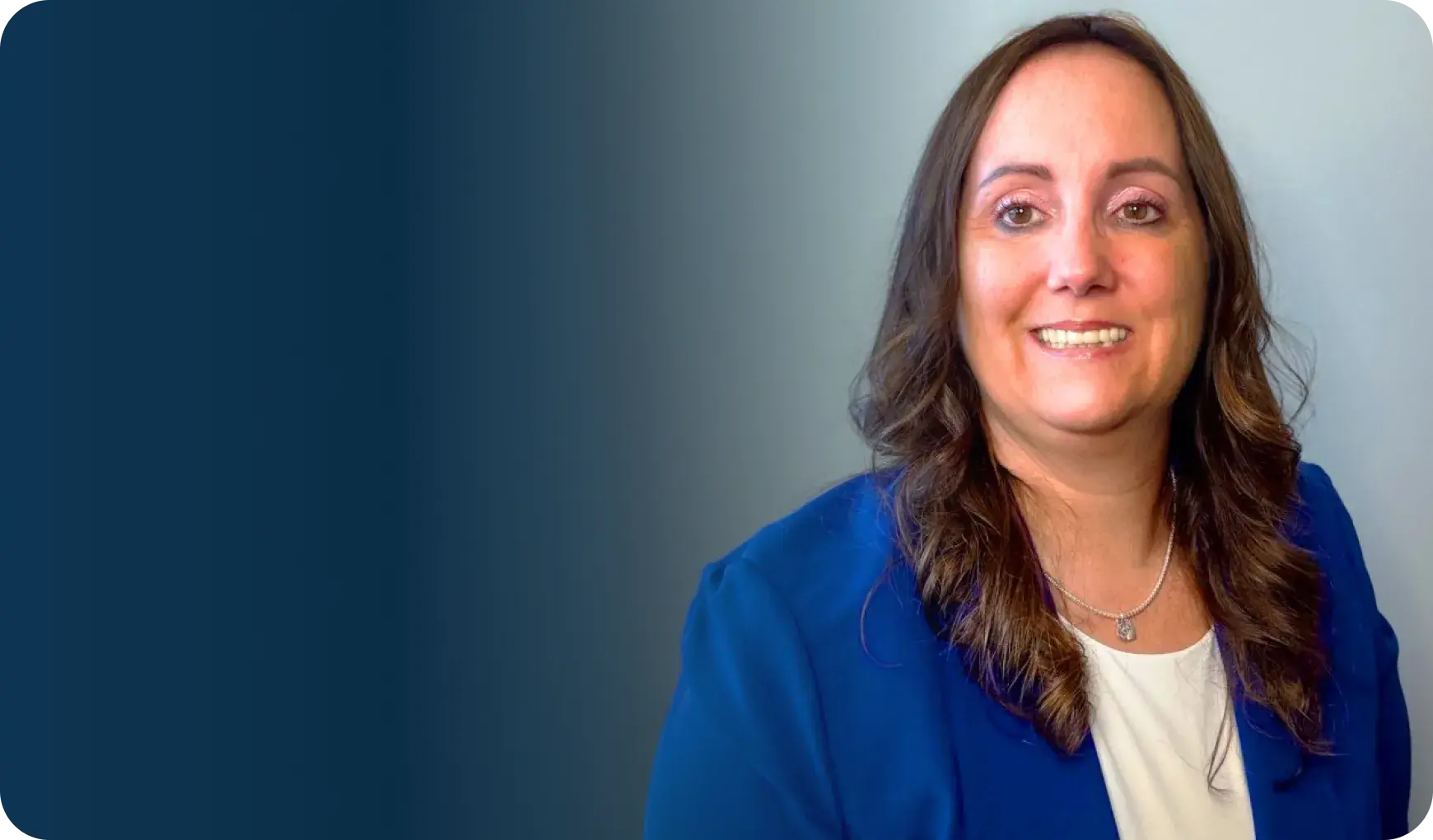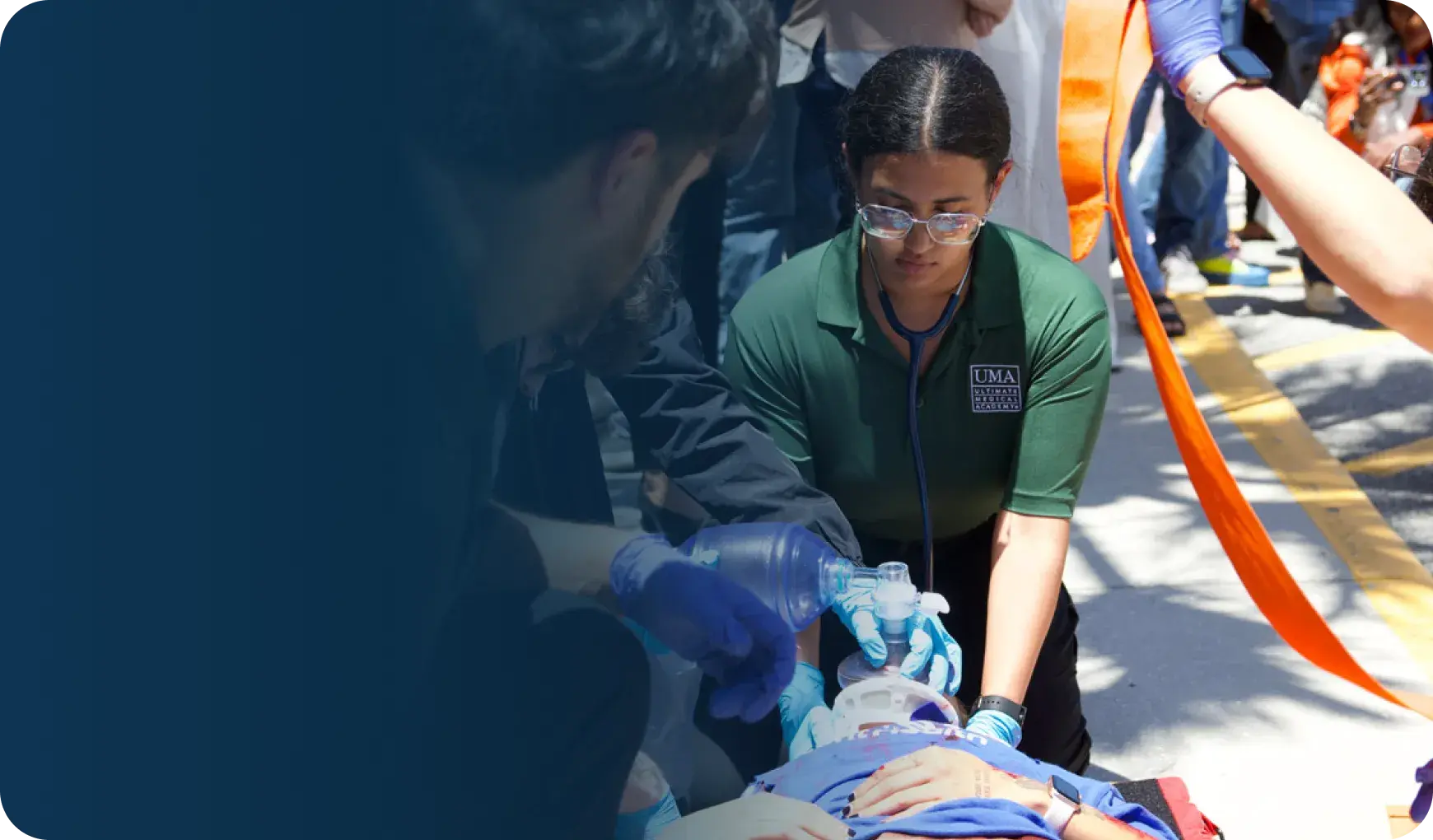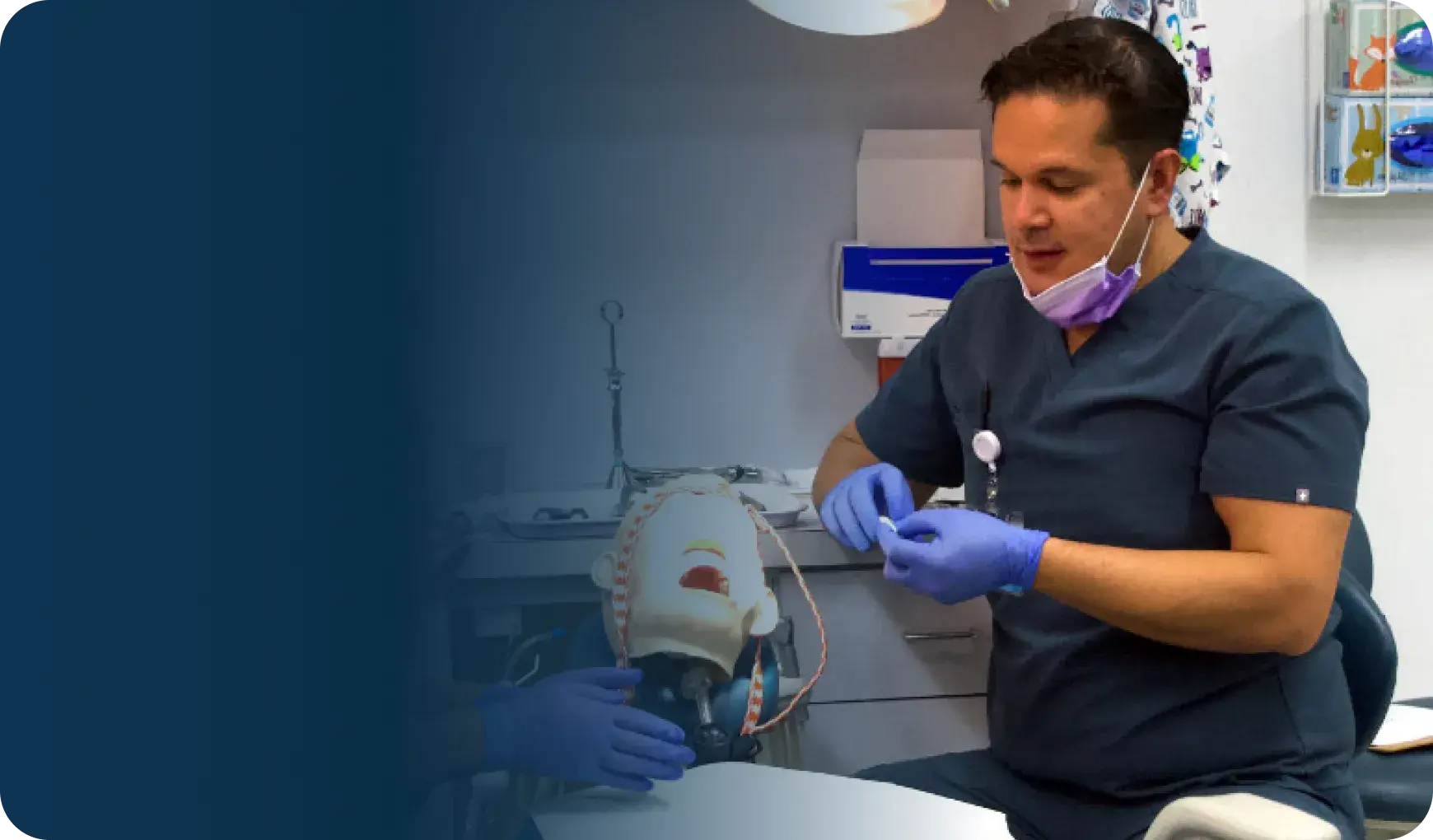
“I believe that personalized guidance helps students stay on track and feel empowered not only in school, but in life.”
Angelina M.
Instructor, Medical Assistant Program, UMA Clearwater Campus

Mike M.
Emergency Technician Program Director, UMA
Mike M.
Emergency Technician Program Director, UMA
Mike M. is the Director of the Emergency Medical Technician program (EMT) Program at Ultimate Medical Academy (UMA), where he leads strategic development, implementation, and continuous improvement. Below, he discusses his unexpected journey into emergency medicine, how his diverse experience shaped his philosophy, and UMA’s approach to preparing the next generation of EMTs.
I initially enrolled in an EMT class because I was told I needed first aid training to become a scuba instructor. What I didn’t realize at the time was that this class — my very first in college — would completely change the course of my life. Becoming an EMT opened doors I never expected, including the opportunity to serve in the military.
During my time in the military, I served as an Air Force Medical Specialist, which is where I first stepped into the role of an instructor. I found that the more I taught, the more confident and skilled I became — and I genuinely enjoyed helping others grow. That experience sparked a passion not only for emergency medicine but also for education. Now, years later, I’m still just as committed to inspiring and training the next generation of EMTs.
Working in hyperbaric medicine, offshore and remote medicine, and dive safety has given me a very real-world, high-stakes perspective on emergency care. These are environments where there’s no room for error — and often no second chances. Whether treating a diver with decompression sickness in a hyperbaric chamber or responding to a medical emergency miles offshore, I learned the importance of staying calm under pressure, thinking critically, and relying on strong foundational skills.
That mindset directly influences how I train EMTs today. I don’t want learners to simply memorize protocols — I want them to understand the “why” behind what they’re doing and to be prepared for the unpredictable nature of emergency medicine. My goal is to create confident, adaptable professionals who can handle whatever situation they’re faced with — because in this field, that can mean the difference between life and death.
What sets UMA’s EMT program apart is our student-centered approach and our commitment to producing field-ready EMTs — not just test-ready graduates. We combine foundational knowledge with hands-on skills training, all delivered in a structured, supportive environment designed to build confidence and competence.
Our curriculum goes beyond the basics by incorporating real-world scenarios, emphasizing critical thinking, and preparing students for the emotional and physical demands of the role. Many of our instructors bring decades of field experience, offering learners the opportunity to learn from those who’ve worked in the trenches — from 911 systems and disaster response to military medicine.
While I wasn’t involved in the launch, it’s clear that the program was created in response to the increasing demand for first responders. Since then, the program has consistently met or exceeded state and national standards, while preparing learners to be successful EMTs — something I’ve been proud to lead since joining UMA in 2024.
UMA’s partnerships with the Crisis Center of Tampa Bay and TransCare Ambulance Service provide learners with meaningful hands-on experience, as many seek valuable exposure to the full scope of the role. This direct involvement enables learners to apply classroom knowledge while developing critical decision-making skills, adaptability, and confidence through diverse emergency situations.
At UMA, hands-on training is at the heart of everything we do. Our learners don’t just learn from textbooks — they practice real skills in real-world scenarios. From the very beginning of the program, learners are introduced to simulated emergencies that mirror what they’ll encounter in the field: trauma scenes, cardiac arrests, vehicle accidents, and more.
Our learners engage with high-fidelity mannequins, medical equipment, and scenario-based training that emphasizes decision-making under pressure. As they progress, they participate in clinical rotations and ambulance ride-alongs, applying their training in live settings and caring for patients under the guidance of experienced EMTs.
This combination of simulation and field experience builds confidence, reinforces critical thinking, and prepares our learners to step into EMT roles with the skills and mindset needed to succeed from day one.
UMA is addressing the EMT shortage through a blend of innovative training approaches, comprehensive student support, and strategic collaborations. Programs such as the EMT initiative — developed in partnership with the Crisis Center of Tampa Bay and offered to its employees — help reduce financial barriers by providing tuition assistance and paid, hands-on experience.
By focusing on learner retention and certification preparation, UMA is producing confident, job-ready EMTs who are making an immediate impact in their communities.
Supportive wraparound services — including academic tutoring, mentoring, transportation assistance, and career guidance — help learners overcome real-life challenges that hinder their progress. When paired with grant funding and tuition assistance from the Crisis Center of Tampa Bay, these resources remove financial and personal barriers, empowering students to stay focused, complete their training, and successfully launch their careers as EMTs.
The role of EMTs is evolving far beyond the traditional 911 response. Today’s EMTs are increasingly involved in community paramedicine, disaster response, behavioral health crises, and even preventive care in underserved areas. They’re becoming frontline public health professionals — bridging gaps in access and care.
At UMA, we prepare students for this future by focusing not only on core EMT skills but also on adaptability, communication, and critical thinking. Our training incorporates real-world scenarios, interprofessional collaboration, and emerging trends in healthcare delivery. We’re not just teaching students how to respond — we’re teaching them how to lead, adapt, and thrive in a rapidly changing healthcare landscape.
Talk with us. Start your journey.
Complete this form and we'll call you to explore options at UMA and answer your questions. We'll also email you info on how to get started. We're with you at every step!

“I believe that personalized guidance helps students stay on track and feel empowered not only in school, but in life.”
Angelina M.
Instructor, Medical Assistant Program, UMA Clearwater Campus

“My mom often told me, ‘You have the heart to care for people,’ and those words stayed with me”
Destinee P.
UMA Graduate

“We must understand that we work with human beings who demand the best of us in search of a solution to their health problems.”
Esteban G.
Senior Instructor, Dental Assistant with Expanded Functions Program, UMA Clearwater Campus